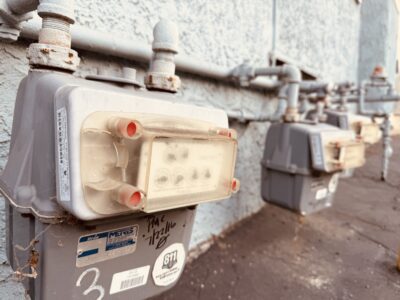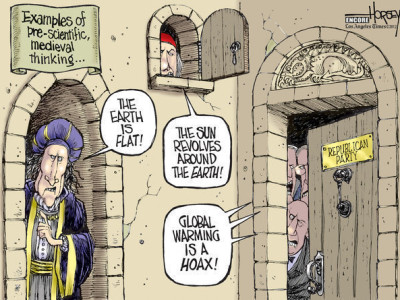EPA to Continue Emissions Trading in Place of Clean Air Interstate Rule
With the success of the 1990 cap and trade program for sulfur dioxide (the major cause of acid rain), cap and trade has become one of the dominant regulatory means to control air pollution in the U.S. And, of course, cap and trade remains one of the central mechanisms to control greenhouse gases in those jurisdictions seeking to control such emissions economy-wide, like the European Union and California. But domestic efforts to control sulfur dioxide and nitrous oxides (which is a precursor to ozone pollution) through cap and trade were dealt a serious legal blow in 2008 when the D.C. circuit of the U.S. Court of Appeals threw out a cap and trade program, called the Clean Air Interstate Rule (CAIR), that the EPA had implemented to tackle cross border air pollution under the Clean Air Act. The Obama Administration has recently announced a cap and trade program to replace CAIR that it has tailored in an effort to withstand legal attack. Whether the new Obama program will be upheld remains to be seen.
Here’s some background. For many years, despite statutory requirements under the Clean Air Act, the EPA did little to require states that produced air pollution that crossed borders and polluted downwind states to stop doing so. Yet the statute plainly requires states not to allow pollution sources within their states to cause cross border pollution that will put the downwind state out of compliance with federal law. States that were downwind from major pollution sources – principally those in the northeast of the country — pressured the EPA to do something about cross border pollution from upwind states in the south and midwest. Through a long and convoluted process (explained here) the EPA eventually promulgated the CAIR to tackle the problem. The CAIR created an optional cap and trade program that allowed states to require sources of nitrous oxides and sulfur dioxide to participate in a cap and trade program. The EPA set overall levels of allowable pollution through a cap on total pollution that all states could emit. The agency then allocated to polluters allowances — through a very complicated allocation process — that allowed the polluter to emit one ton of a regulated pollutant per allowance. If the polluters needed more allowances they could purchase them from other sources that reduced their emissions below the amount of allowances they were allocated. The CAIR rule had significant support from both the regulated community and environmental groups because it and its predecessor programs had produced large reductions of pollution cost-effectively.
But there was one big legal problem. With the exception of the acid rain cap and trade program, nowhere in the Clean Air Act is the EPA given the authority to create a cap and trade program. Now the statute doesn’t prohibit the agency from doing so either but the statute is quite directive in various ways that make constructing such a program somewhat difficult. The main legal problem with CAIR is that under Section 110(a)(2)(d) of the Clean Air Act, each individual state is prohibited from allowing its sources to emit pollutants that cause a downwind state to violate federal air standards. CAIR didn’t measure each individual state’s contribution to other individual states’ pollution levels, nor did it ensure that the cap and trade program would actually eliminate enough pollutants from an upwind state to make sure that a downwind state was complying with federal standards. CAIR instead had overall limits and was based on the assumption that meeting these overall limits would dramatically improve air pollution across all the participating states. At least theoretically, though, even if the overall cap was met an individual state’s levels of pollutants could still be too high to comply with federal air standards and the violations could be caused by upwind states. Hence the D.C. Circuit’s opinion striking CAIR down.
The new rule issued by the Obama Administration, called the Cross-State Air Pollution Rule, is designed to withstand legal attack. It does so by calculating for each state the significant contribution that state is making to the pollution of downwind states. Each upwind state must ensure that it reduces its pollution by that amount, called a budget. It may do so by allowing its in-state sources to trade allowances either in or out of state so long as the state can demonstrate that it has met its emissions budget.

The new rule replaces the CAIR rule, which was allowed to remain in effect while the EPA devised a replacement, and applies to 28 states, all in the midwest and eastern part of the country. The new rule raises a number of interesting questions that experience will eventually answer: first, is it legally sound? Given the complexity of the rule it’s hard to imagine it won’t face legal challenge by an affected state or an affected polluter. The administration has obviously tried hard to meet the objections of the D.C. Circuit but whether it has done so remains to be seen. Second, can the theoretical promise of cap and trade — allowing emitters to trade allowances among themselves in order to find the most cost-effective pollution reductions — be met when the rules governing the program have to, by definition, be quite complicated in order to meet the statutory strictures of the Clean Air Act? Or will the separate state emissions budgets, restrictions on trading out of state in order to meet those budgets, etc., dramatically limit the options emitters and states have to meet their legal obligations under the Clean Air Act? Will the result be more narrowly tailored rules for each state at a higher cost? Congress could, of course, expand the EPA’s authority to deal with cross border pollution by amending the Clean Air Act to give the agency more flexibility. But the odds of this Congress proposing and passing constructive legislation to aid the EPA are not, to say the least, high. Instead, time will tell about whether the new Cross-State Air Pollution Rule is legal, environmentally successful and cost-effective.
Reader Comments
2 Replies to “EPA to Continue Emissions Trading in Place of Clean Air Interstate Rule”
Comments are closed.







No one had asked the D.C. Circuit to outlaw interstate trading when it reviewed the CAIR, and it seems regrettable that it chose to do so. The decision is not easy to understand (particularly in its effort to distinguish precedent), but as far as I can tell, EPA has been pretty scrupulous in trying to follow the court’s guidelines.
Over the years, it seems to me, Republicans and business interests have foregone the opportunity to pass reasonable legislation to make environmental law more cost-effective, preferring to go for a big anti-regulatory win. Under Reagan, Gingrich, and Bush II, this strategy resulted in very little actually legislative change. Maybe they’ll have better luck next time, but it does seem unfortunate that more moderate reforms — the kind that might actually lead to better regulation — never get a hearing.